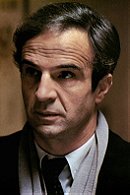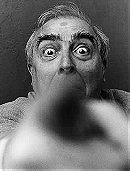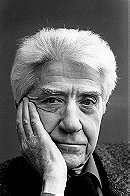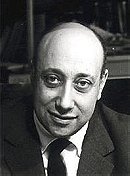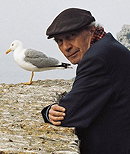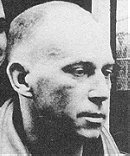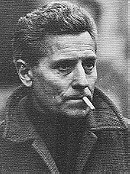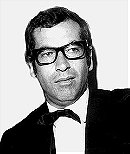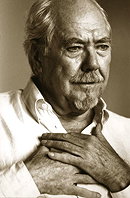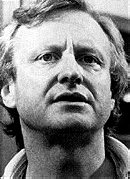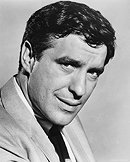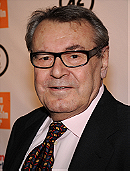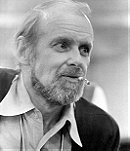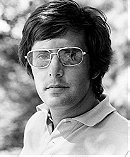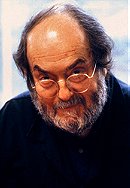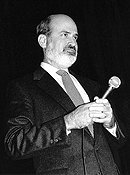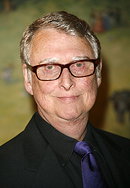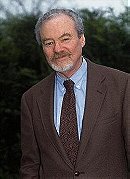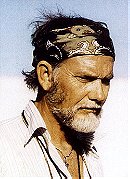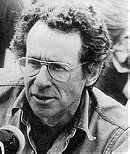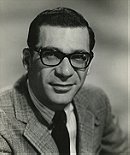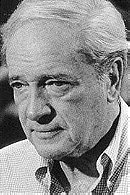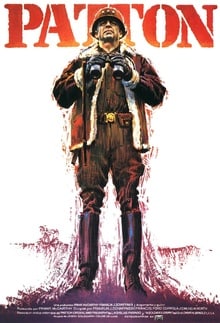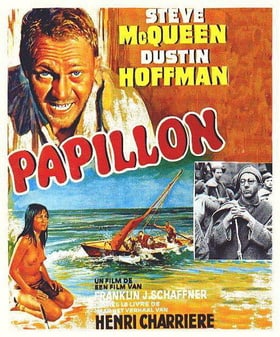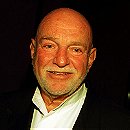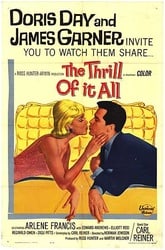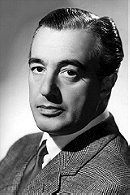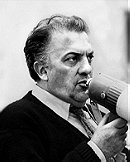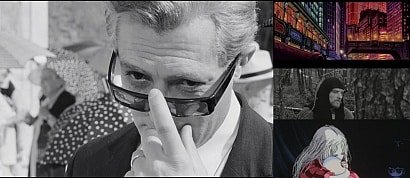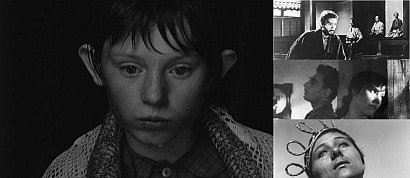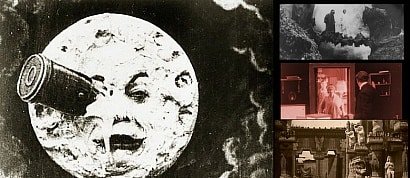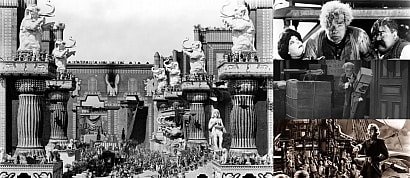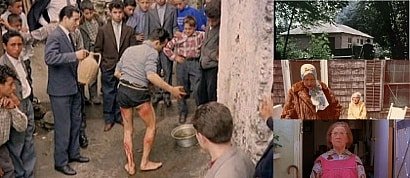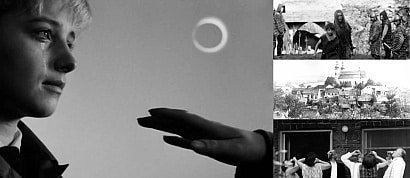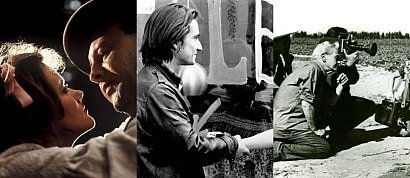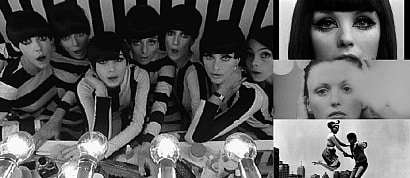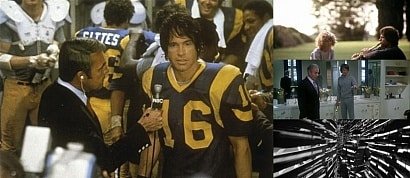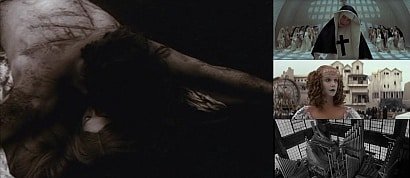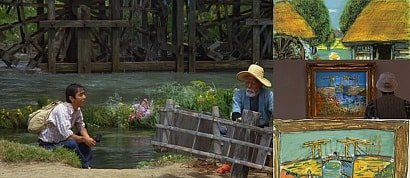The Idiot's Guide To Famous (Classic) Filmmakers
Sort by:
Showing 1-50 of 85
Rating:
List Type:
 Add items to section
Add items to section
Vilified Nouvelle Vague
They emerged from the late 50s and early 60s French New Wave movement, which had a more dynamic and radically realistic style than its precursors. The movies that they made in that era were free-form explorations of different types of methodologies.

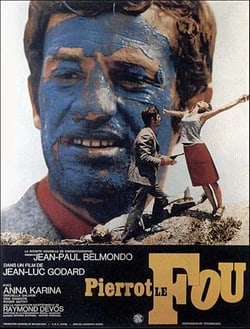










Trademarks, as listed by IMDB
-Frequently casts Anna Karina
-Shot-reverse-shot of characters looking at faces on a sheet/poster (Anna Karina looking at the faces on dollar bills in Band of Outsiders (1964), Jean-Paul Belmondo looking at a poster of Humphrey Bogart in Breathless (1960)).
-[Homage] Frequently reference French Literature and American Film Noir/B-Movies (_À bout de souffle (1960)_, _Band of Outsiders (1964)_).
-[Jump-cuts] His _À bout de souffle (1960)_ popularized the use of jump-cutting and ignoring the 180 degree line.
My Observations:
-Excessive use of typography.
-Leftist/Marxist themes and messages.
Stay Away If: You hate highly stylized (to the point of sterility) intellectualism, with long, mundane rambling diatribes spoken by impassioned characters, and movies that force you to use your brain to comprehend the story yourself. Most of his films are not very accessible; they are sort of an acquired taste and require a degree of willingness to absorb the thoughts and wisdom he so hazily presents.
Severin Severin's rating:












Random Facts:
Grew up watching the films of John Ford, Howard Hawks, Nicholas Ray and Alfred Hitchcock.
Wrote for Cahiers Du Cinema, along with Godard and other New Wave darlings. He was a skilled film critic and journalist before he decided to become a director.
His films are much more sensitive and emotional than Godard's work.
Antoine Doinel was Truffaut's alter ego, and he used Jean-Pierre Leaud to represent the character in a series of films: Les Quatre cents coups, Antoine et Colette (1962), Baisers volés (Stolen Kisses, 1968), Domicile conjugal (Bed and Board, 1970), and L’Amour en fuite (Love on the Run, 1979).
Truffaut proved that you need to truly love movies to make brilliant movies.
He advocated the Auteur theory:
To quote Wikipedia, "In film criticism, auteur theory holds that a director's film reflects the director's personal creative vision, as if they were the primary "auteur" (the French word for "author"). In spite of—and sometimes even because of—the production of the film as part of an industrial process, the auteur's creative voice is distinct enough to shine through all kinds of studio interference and through the collective process."
Severin Severin's rating:








Trademarks:
-Nonlinear narratives.
-Haunting themes.
-Obsessions with time and memory, past and present.
-Sadness and melancholy.
Stay Away If: You can't handle a depressing and deflating experience.
Severin Severin's rating:












Trademarks:
-A meandering preoccupation (could it possibly be admiration?) with crime and gangsters.
-The violence is understated and not the prime focus of his films, it's about the characters' psychology.
-Unsympathetic and emotionally distant protagonists.
-Stylish and cool cinematography.
-His films are all either in crisp, sharp black & white, or in bleak, bluish-gray color.
-Frequently casted Jean-Paul Belmondo and Alain Delon.
Stay Away If: You can't handle a different sort of crime movie. There is a lot of sparse grittiness in his work that won't appeal to people seeking glamour and fun in their gangsters.
Severin Severin's rating:










"As the cresting new wave battered at the restrictions of conventional narrative technique, Malle created a personal style, sexual and emotional which was to sustain him while flashier colleagues failed. Of the new wave survivors, he is the most old-fashioned, the most erotic, and arguably, the most widely successful... If Truffaut turned into the René Clair of the new French cinema, Malle may yet become its Max Ophüls." - John Baxter (International Dictionary of Films and Filmmakers, 1991)
"Although he began to work at the same time as the New Wave directors, he was a speculative, conventional talent: sophisticated and polished, but moving rather aimlessly from one subject to another, only rarely discovering more than entertainment in his films. Too often, his choice of material was overambitious or fashionable, and his working out of human situations melodramatic. At worst, he had a taste for glossy, commercial packages that masquerade as artiness, and it seemed reasonable to regard him as the successor to such proficient but shallow directors as Autant-Lara and Duvivier." - David Thomson (The New Biographical Dictionary of Film, 2002)
Severin Severin's rating:






Although I've never actually seen any of the dude's films, he seems to have a knack (lol more like fetish) for exploring sexual and pornographic themes.
 Add items to section
Add items to section
Neurotic New Hollywood
These directors emerged from the post-studio "golden era" of classic film. From the late 60s and on, they made violent, sexually explicit, morbidly realistic and increasingly intellectual films that defined a generation. Hollywood directors also gained a lot more freedom in creating their own personal visions of what their movies should be, rather than being forced to obey the studios they worked for. As censorship waned, obscenity rose.








This man is the very definition of the phrase "a bundle of nerves." You don't know all the veritable types of neuroses until you watch one of his films. Woody focuses on all the tics, annoyances, irrational fears and worries, ridiculous social customs, the forced politesse, the awkwardness of daily life, and everything psychological, psycho-sexual, Freudian and Jungian, that you can possibly think of.
Trademarks:
-Frequently casts Diane Keaton (now he focuses on the much less talented Scarlett Johansson and Penelope Cruz).
-Stories about relationships and people.
-Witty and humorous dialogue.
-Movies take place in New York.
-His films end with white on black credits that don't scroll.
-Self-deprecating comedy.
-Existential woe.
-Constantly references Ingmar Bergman.
-Psychoanalysis.
Here is a sample of his veritable panache of pastiches:



Dude, that is SO Nietzsche.
Severin Severin's rating:








Altman's Trademarks, according to IMDB:
-His movies often contain overlapping dialogue, where several characters speak at once.
-In his films, we often see and hear characters from outside a window, or from a distance.
-Frequently directs large ensemble pieces.
-Social commentary themes.
My Observations:
-Episodic narratives
-Lack of coherence.
-Generous use of zoom lens.
-Despises authority and the "star and studio" system.
Being muddled, messy and innovative is Altman's niche.
"I don't storyboard anything. I go on a set in the morning and, unless a scene requires a lot of props, I won't even tell the crew what I'm going to shoot first. I know what the setup is and which actors are required. But I have to see what occurs and like to shoot in sequence if possible. It makes for a lot of editing but I like to go on a journey with the actors. I also love working on ensemble movies like Nashville (1975), Short Cuts (1993) and Gosford Park (2001). Having multiple narratives makes my job a lot easier: if something doesn't work, it means I can cut away to something else. I also like the audience to use their necks to take in everything happening in the frame. I'd hate to do something like Two for the Seesaw (1962) where there were just two close-up faces to look at.
People talk about my signature. But I ask them if they ever saw Howard Hawks' films. They're filled with overlapping dialog. Everything I've learned has come from watching other directors: Bergman [Ingmar Bergman, Fellini [Federico Fellini], Kurosawa [Akira Kurosawa], Huston [John Huston] and Renoir [Jean Renoir]."
Severin Severin's rating:






Though his career flourished in the early 70s, with major hits like The Last Picture Show and Paper Moon under his belt, Bodanovich soon went into a downwards spiral and hasn't directed anything worthwhile in more than 20 years.


Trivia:
-Photographed Bob Dylan for the cover of his album "Blonde on Blonde."
-Was engaged to Faye Dunaway, but she dumped him for Marcello Mastroianni.
-Was a photographer for magazines like Vogue, Esquire and McCall's.
Severin Severin's rating:








A preoccupation with themes of manliness and masculinity.
His career faded in the 80s.
Cast Lee Marvin in two of his early films.










This man is the legendary godfather of a painfully realistic style of movie-making called direct cinema (not cinéma-vérité, like I previously stated before I was graciously corrected). The movement was about making films that captured life truthfully with an unblemished eye; there are no cutaways or fade outs to rescue the viewer from an awkward or harrowing scene. It's all very honest and barren, like an enlightening sort of crudeness.
John often cast his lovely wife Gena Rowlands in his films.

To quote People magazine:
Because of his acting background, Cassavetes has also developed an unusual directorial style. For one thing, he prefers to work with a stock company of his friends, among them Falk, Gazzara and Seymour Cassel, as well as the mothers, fathers, sisters, brothers and children of his friends and neighbors. "John doesn't make a picture like other people," says Falk. "Take it from the horse's mouth. He likes to keep you off balance as an actor. Also, when you're working with John and Gena, you can't tell that they're husband and wife. Gena can get just as confused and angry at him as I do."
During the filming of Love Streams, for example, Cassavetes directed Rowlands to pour a drink, pick up the telephone and light a cigarette nervously. "If I do that, I'll light my hair on fire," she protested. Minutes later the scene was shot—his way. "Grrr, I hate that man," muttered Rowlands, after the scene wrapped. "Now there," said Cassavetes, smiling as his wife walked off the set, "goes one distraught woman."
During another movie, recalls Rowlands, "we had the whole cast and crew over to the house late and there was a lot of drinking and eating going on. One of the actors, I won't say who, tore up the flowers in the driveway, and I was furious. I told John, who was directing, that either the actor went or I went. John kind of hesitated, and that's when I knew he was a director. My scenes in the film were finished, but the other actor's weren't, so John needed him around." The actor stayed; so did she. "John and I probably disagree on just about everything in the world," adds Gena, who describes their marriage as "volatile. But that's what marriage is all about. If you think a marriage isn't going to be like that, you've got trouble."
Stay Away If: You hate disheartening, sluggishly paced films with minimal dialogue.
Severin Severin's rating:






Cimino's Fall From Grace:
Heaven's Gate is known one of the biggest box office bombs of all time, earning back only an estimated 3 million dollars from a 44 million dollar budget. Because of such a huge loss, studios began to tighten their grip on directors and give them less creative freedom from the early 80s and onward.








Trademarks, according to IMDB:
-Often casts his own real-life extended family members in his films. In the case of the Godfather films, their characters' relationships to "Michael Corleone" often paralleled their real-life relationship to Coppola. He cast his sister, Talia Shire, as Michael's sister Connie, and his daughter, Sofia Coppola, as Michael's daughter Mary - named for Coppola's other daughter. In addition, Diane Keaton said that she modeled her performance as Kay Adams after Elanor Coppola, since both Kay and Coppola are protestants who married into Italian Catholic families.
-Includes the original author's name in the title of his adaptations (i.e., Mario Puzo's The Godfather (1972), Bram Stoker's Dracula (1992)).
-Releases re-edited versions of his work years later (e.g., The Godfather (1972) and Apocalypse Now (1979)).
-Often works with cinematographer Gordon Willis and producers Fred Roos and Gray Frederickson.
-Frequently casts Robert Duvall, the late John Cazale, Nicolas Cage, Diane Keaton, Matt Dillon, Harrison Ford, Laurence Fishburne and Marlon Brando.
"It's ironic that at age 32, at probably the greatest moment of my career, with The Godfather having such an enormous success, I wasn't even aware of it, because I was somewhere else under the deadline again."
Severin Severin's rating:












In the 70s and 80s, De Palma made peculiar and violent films that imbued much sleaze and filth. He began to lose his cutting edge style in the late 80s, and since then has stuck to more commercial and mainstream ventures.
Trademarks:
-Voyeuristic themes. In Blow Out, a photographer becomes entangled in murder after he accidentally takes a picture of the act. In Body Double, a man constantly spies on a woman through his window. In Dressed To Kill, a serial killer meticulously stalks his victims.
-His suspense thrillers are highly influenced by Alfred Hitchcock.
-Often used to cast his former wife Nancy Allen when he was married to her.
-Other recurring actors in his films include Robert De Niro (4), Al Pacino (2), John Lithgow (3), John Travolta (2) and Kirk Douglas (2)
-Films in long takes, tracking shots and employs a 360 degree camera pan. Also uses split screen and slo-mo.
Severin Severin's rating:


Before his move to Hollywood, Forman made films in his Czech homeland.






He's mostly known for these though:










He's mostly known for these though:




Severin Severin's rating:







Undoubtedly, a multi-talented maestro!
This man boasts a grand array and resume of achievements, having been an actor, dancer, musical theater choreographer, director, screenwriter, film editor and film director. Being a man of the theater, he often directed films about performers and thespians, or fun filled musicals, though All That Jazz is a musical that actually has a great degree of conceptual depth.
Severin Severin's rating:


Severin Severin's rating:


Severin Severin's rating:






A shift in gears
After those 4 stylistically conventional films, Kubrick's career took a turn for the bold when he released the highly controversial Lolita, in 1962.








What Next?
After that, there was always some sort of though-provoking conflict in all of his films. Public morality was often shattered, and many were set aflame and enraged by a lot of the subject matter that Kubrick encapsulated. From homosexuality to rape to pedophilia to orgies, someone was always soiling themselves over the sexuality and violence portrayed onscreen in his movies.
Despite the prudes, Kubrick's very name elicits a wave of awe and adulation from every devoted cinephile. In other words- practically everyone loves him, with the exception of those who can't handle any sort of salacious obscenity or lewdness.
The Long List of Trademarks
He obviously had many MANY original singular attributions, being such a distinctive risk-taking revolutionary and a unique butterfly and all, so here they are a la IMDB:
-[Narration] Nearly all of his films contain a narration at some point (2001: A Space Odyssey (1968)) contains narration in the screenplay, as does the screenplay for Eyes Wide Shut (1999), and The Shining (1980) has some sparse title cards).
-Adapted every film he made from a novel, excluding his first two films, Killer's Kiss (1955) and Fear and Desire (1953) (both from original source material), and 2001: A Space Odyssey (1968).
-His films often tell about the dark side of human nature, especially dehumanization.
-[Symmetry] Symmetric image composition. Often features shots down the length of tall, parallel walls, e.g. the head in Full Metal Jacket (1987), the maze and hotel coridors in The Shining (1980) and the computer room in 2001: A Space Odyssey (1968).
-[Three-way] Constructs three-way conflicts
-[Faces] Extreme close-ups of intensely emotional faces
-[CRM 114] He often uses the sequence CRM114 in serial numbers. CRM-114 is the name of the decoder in Dr. Strangelove or: How I Learned to Stop Worrying and Love the Bomb (1964), the Jupiter explorer's "licence plate number" in 2001: A Space Odyssey (1968) is CRM114, and in A Clockwork Orange (1971) Alex is given "Serum 114" when he undergoes the Ludovico treatment.
-[Bathroom] All of Kubrick's films feature a pivotal scene that takes place in a bathroom.
-Known for his exorbitant shooting ratio and endless takes, he reportedly exposed an incredible 1.3 million feet of film while shooting The Shining (1980), the release print of which runs for 142 minutes. Thus, he used less than 1% of the exposed film stock, making his shooting ratio an indulgent 102:1 when a ratio of 5 or 10:1 is considered the norm.
-[Beginning Voice-over] Paths of Glory (1957), Dr. Strangelove or: How I Learned to Stop Worrying and Love the Bomb (1964) and A Clockwork Orange (1971) all begin with a voice over, and The Killing (1956) features narration.
-Involves his wives in his movies. His first wife, Toba Etta Metz Kubrick, was the dialogue director for Stanley's first feature film Fear and Desire (1953). His second wife, Ruth Sobotka Kubrick, was in Killer's Kiss (1955) as a ballet dancer named Iris in a short sequence for which she also did the choreography. Kubrick's third, and final, wife, Christiane Harlan Kubrick, appeared (as Susanne Christian) in Paths of Glory (1957) before she married him as the only female character (a German singing girl) in the movie. She also did some of the now-infamous paintings for A Clockwork Orange (1971) and some more for Eyes Wide Shut (1999). In addition, her brother, Jan, was Stanley's assistant for A Clockwork Orange (1971) and the executive producer for all of Kubrick's films starting with Barry Lyndon (1975) and going through The Shining (1980), Full Metal Jacket (1987) and Eyes Wide Shut (1999). Also, his daughter, Vivian Kubrick, is the little girl who asks for a Bush Baby for her birthday in 2001: A Space Odyssey (1968).
-Almost always uses previously composed music (such as The Blue Danube and Thus Spake Zarathustra in 2001: A Space Odyssey (1968))
-Preferred to shoot his films in the Academy ratio (1.37:1). The exceptions were: Spartacus (1960), in Panavision, and 2001: A Space Odyssey (1968), in Cinerama. Much of his films consist of wide-angle shots that give the impression of a wide-screen movie, wide up-and-down as well as wide sideways. From The Killing (1956) onward, his films looked increasingly odder, bigger, and more properly viewed from the rows closer to the screen.
-One of his signature shots was "The Glare" - a character's emotional meltdown is depicted by a close-up shot of the actor with his head tilted slightly down, but with his eyes looking up - usually directly into the camera. Examples are the opening shot of Alex in A Clockwork Orange (1971), Jack slowly losing it in The Shining (1980), Pvt. Pyle going mad in _full Metal Jacket_ and Tom Cruise's paranoid thoughts inside the taxicab in Eyes Wide Shut (1999). Even HAL-9000 has "The Glare" in 2001: A Space Odyssey (1968).
-[First-person] Uses the first person viewpoint (the character's perspective) at least once in each film.
-Credits are always a slide show. He never used rolling credits except for the opening of The Shining (1980).
-Varies aspect ratios in a single film. Apparent in Dr. Strangelove or: How I Learned to Stop Worrying and Love the Bomb (1964) and A Clockwork Orange (1971).
-In almost every movie he made, there is a tracking shot of a character (the camera following the character).
-All of his films end with "The End," when this became out of style in later years because of the need to run end credits, he moved "The End" to the end of the credits.
-Often uses music to work against on-screen images to create a sense of irony. In A Clockwork Orange (1971), Alex sings "Singin' In the Rain" while raping Mrs. Alexander. In Dr. Strangelove or: How I Learned to Stop Worrying and Love the Bomb (1964), images of nuclear holocaust are accompanied by the song "We'll Meet Again". The final scene in Full Metal Jacket (1987) has the battle hardened Marines singing the theme to "The Mickey Mouse Club".
-[Dark humor] All of Kubrick's films, especially "Dr. Strangelove", have elements of black humor in them.
-Preferred mono sound over stereo. Only three of his movies - Spartacus (1960), 2001: A Space Odyssey (1968) and Eyes Wide Shut (1999) - were originally done in stereo sound.
-[Duality] Kubrick's last five films, minus The Shining (1980), are structurally split into two distinct halves, most likely to mimic the nature of duality in the characters of his films. For example, A Clockwork Orange (1971) shows Alex (Malcolm McDowell) as a sadistic rapist and murderer in the first half of the film and a mind-controlled guinea pig in the second half. In Eyes Wide Shut (1999), Bill (Tom Cruise) travels amidst sexual temptation in New York at night in the first half of the film and rude awakenings during the day in the second half.
Severin Severin's rating:










Trademarks:
-Social Justice issues.
-Heated arguments and debates.
-Movies based on plays.
-Corruption of authority.
-Powerful acting displayed in his films.
-Directed 17 actors to Oscar nominations.
"While the goal of all movies is to entertain, the kind of film in which I believe goes one step further. It compels the spectator to examine one facet or another of his own conscience. It stimulates thought and sets the mental juices flowing."
Severin Severin's rating:


Severin Severin's rating:








Sam's fetish for violence
Back in the day, they called Peckinpah "Bloody Sam," because, you guessed it, he liked to see his anti-heroes spill the blood of whomever came in their way. The violence was realistic though- unlike other films, which masked any sort of brawling and killing under the guise of something an action hero simply HAD to do for morality's sake, Peckinpah didn't care if the character was sympathetic or not. Gone were the days of toned-down sissy violence; in his movies blood packs exploded everytime someone was shot down. He ushered in a whole new technique and method of filming violence, keeping it all raw and gritty throughout his career.
Sam's Fetish For Misogyny
Although he's a brilliant director whose films are fantastic and visionary, the man was a big fat chauvinist. From the infamous rape scene in Straw Dogs to the so-called whores and prostitutes that frequented his other films, Peckinpah always made sure to portray woman in a negative light, or have them beat up and slapped around by their male counterparts. The women in his films are always one dimensional sidekicks and punching bags for the men near them. I think this rather comedic GIF sums up his sexist attitude towards females perfectly:

Stay Away If: You're a pacifist.
Severin Severin's rating:










The Significance of Bonnie & Clyde
Bonnie and Clyde IS essentially the film that gave birth to the whole New Hollywood movement. There was always a kind of friction between the establishment (the producers, the studio executives, the censors, etc) and the directors who wanted to make whatever they chose to, without being chastised and pushed around by that higher authority. When the world witnessed the excessive violence and the blatant sexuality of Bonnie and Clyde, they were naturally in awe, as they'd never seen such a thing before.
After that movie, nothing was ever the same again and the sort of innocence and naivete that Hollywood films had was lost. An era of philosophizing, aggrandizing, tumultuous cinema lay ahead.
To Quote Peter Biskind:
The originality in Bonnie and Clyde, however, lay in the fact that it was recognized that in America by mid-decade, both Marx AND Freud were dead, not to mention God- as memorialized on the April 8,1966, cover of Time magazine. But if the kings were dead, it was long live the king, in this case Andy Warhol. Fame and glamour, as the Beatles recognized, had become more potent than sex, class or religion. "Warhol was giving parties at the Factory with Viva, Edie, Candy Darling, the fifteen minutes of fame bit," says David Newman. "None of those people did anything; they just wanted to be celebrities.
They saw in each other the mirror of their own ambitions. Although they were both at the bottom of society, in each other they saw someone who validated an image of what they could be. Clyde creates for her a vision of herself as a movie star, and from that moment on, even though he couldn't fuck her, he's got her."
And similarly, near the end, when Bonnie reads him her poem, "The Story of Bonnie and Clyde," published in the newspaper, he tells her, "You told my story. You made me somebody they're going to remember." It's then that he's finally able to perform sexually; fame is an aphrodisiac.
Warren Beatty himself was both puppeteer and puppet, a trope that appears in many of his movies, Bonnie and Clyde being the first. Seducing Bonnie, in essence, promising to maker her a star, Clyde does a casting couch number on her. In other words, he becomes the producer inside the movie, Beatty's fictional alter ego. This makes Bonnie and Clyde a movie about itself, as moves often are, a representation of its own journey to the screen, an act of aesthetic narcissism, a mirror held up to itself. There was a whole lot more to the outlaw couple than there was to the somnambulists who glided, like exotic fish, through Warhol's films. Bonnie and Clyde were the performance artists of the 1960s, or the outsider artists of today.
Their legend was their art. They were their own subjects, and their medium was crime. Bonnie and Clyde offers up a metaphor of art as an offense against official culture, not unlike Godard's oft put analogy between the camera and the gun, or Scorsese's portrait of himself as a killer seated in the back of the cab in Taxi Driver. As such, the subject of the movie- transgression against the status quo- replicated and foretold in it's forception. Like its eponymous heroes, the picture was nearly killed in return.
Severin Severin's rating:












The Agony and the Ecstasy of Rajmund Roman Thierry Polański
In 1936, when Roman was 3 years old, Europe was already in the throes of misery and war. After Poland was invaded by Nazi Germany, Roman and his family were forced into the Kraków Ghetto because they were Polish Jews. So were the purity laws, and Roman was even expelled from school and forced to wear a blue Star of David armband for the remainder of his childhood.
As a young boy, he watched his neighborhood become demolished as every Jew in the vicinity was eventually deported to concentration camps, including his parents. These memories inspired his later work, The Pianist. When he was 6, Roman experienced this:
"I had just been visiting my grandmother . . . when I received a foretaste of things to come. At first I didn't know what was happening. I simply saw people scattering in all directions. Then I realized why the street had emptied so quickly. Some women were being herded along it by German soldiers. Instead of running away like the rest, I felt compelled to watch.
One older woman at the rear of the column couldn't keep up. A German officer kept prodding her back into line, but she fell down on all fours, . . . Suddenly a pistol appeared in the officer's hand. There was a loud bang, and blood came welling out of her back. I ran straight into the nearest building, squeezed into a smelly recess beneath some wooden stairs, and didn't come out for hours. I developed a strange habit: clenching my fists so hard that my palms became permanently calloused. I also woke up one morning to find that I had wet my bed."
His father was sent of to Mauthausen, his mother to Auschwitz. His father's last words to him before being sent away were "Get lost!," as he feared that Roman would be spotted and marched away too. Roman hid with various families that took him in during the war, but it was a filthy, fearful and degrading life he had to lead. He was once beaten so badly that to this day, he still has a metal plate in his head. He was reduced to hiding in sewers and stealing food when he was hungry. It was a difficult life, but Roman survived, being among the only 10% of Polish Jews that lived through the era. His mother was gassed to death in Auschwitz, but his father managed to survive.
Fast forward to January 20, 1968. Roman marries rising starlet Sharon Tate. She is statuesque and beautiful, and though he often cheats on her, she doesn't seem to mind. "We have a good arrangement. Roman lies to me and I pretend to believe him." Though he was not exactly a devoted husband, he did encourage Sharon to pursue her career saying, "I want a hippie, not a housewife."
Sharon became pregnant at the end of that year, and on February 15, 1969, the two moved to 10050 Cielo Drive in Benedict Canyon. While Roman was in Europe making a movie, she was murdered on August 8 by Charles Manson's crazed cult-family. Sharon was just 2 weeks away from giving birth.
“Meeting Sharon? When I hired her for ‘The Fearless Vampire Killers’, of course. We got married in 1968. By the summer of ’69 she was very pregnant and I was very busy, working on a film script in London. It seemed best she went back to the house we rented in LA and I could stay on and finish the film and get back to LA as soon as I could. Everyday we would talk on the phone. When it rang one day, I thought it was her but it was my agent in LA. He was crying. My reaction first was, naturally, no reaction, stunned disbelief, I suppose you call it. Friends came to me quickly, I think we went out for a long walk, they called a doctor who gave me something, a shot and I slept. Then I took a plane to LA. You must understand, there is much which now I cannot recall, which I have blocked out of recollection. After the funeral, I stayed on in LA because I had the ludicrous notion that finding the murderer would somehow ease my grief."
And of course, we all know that on March 11, 1977, Roman was convicted of raping a 13 year old girl in Jack Nicholson's Mulholland home. Since his life has been filled with such somber and tragic moments, it obviously poured over into his cinema.
A key aspect of a Roman Polanski film is that it always has an unhappy or inconclusive ending. In his world, the threads don't tie up so nicely, the atmosphere is ominous, and the protagonists lead dark gloom and doom lives that rarely ever end well. His movies show the duality of humanity; no one is ever just plain and simply "good" or "evil," "nice" or "mean." And by this logic, although pedophilia is a part of his legacy, a pervert isn't all he is, the man's a lurid genius!






So basically he loved Robert Redford enough to put him in like 7 of his movies.


But really, look at that man, don't tell me you wouldn't have casted him every time either okay.
Severin Severin's rating:


Severin Severin's rating:








Trivia:
-Wrote the scripts for Taxi Driver, Raging Bull and The Last Temptation of Christ.
-Being raised strictly and religiously, he saw his first film at the age of 18: Jerry Lewis' Nutty Professor.
-His films are about loneliness, sleaze, downward spirals, and other morbid stuff.
















Scorsese is god. No more can I say.
Trademarks From IMDB:
-Begins his films with segments taken from the middle or end of the story (Raging Bull (1980), Goodfellas (1990) and Casino (1995)).
-[slow-motion] Makes use of slow motion techniques (e.g., Mean Streets (1973), Taxi Driver (1976), Raging Bull (1980)).
-Often uses diagetic music (ie, source of music is visible on-screen)
-Often uses long tracking shots (His most famous tracking shot is from Goodfellas (1990), following Henry Hill and his future wife Karen through the basement of the Copacabana nightclub and ending up at a newly-prepared table). A notoriously difficult shot to perfect, he has been dubbed by some as the "King of the Tracking Shot".
-Often uses freeze frames (Raging Bull (1980), Goodfellas (1990), The Departed (2006)).
-Frequently uses music by The Rolling Stones, especially the song "Gimme Shelter" (Goodfellas (1990), Casino (1995), The Departed (2006)).
-[Cameo] Cameo appearances by himself and family members like his parents, Charles Scorsese and Catherine Scorsese. Catherine played Joe Pesci's mother in Goodfellas (1990).
-Frequently sets his films in New York City
-Unflinchingly graphic and realistic violence
-Frequently casts pop stars in small acting roles: Kris Kristofferson in Alice Doesn't Live Here Anymore (1974), Clarence Clemons in New York, New York (1977), Mick Jones, Joe Strummer, Paul Simonon, and Ellen Foley, The King of Comedy (1983), Iggy Pop in The Color of Money (1986), David Bowie in The Last Temptation of Christ (1988), Deborah Harry and Peter Gabriel in New York Stories (1989), Marc Anthony and Queen Latifah in Bringing Out the Dead (1999), Gwen Stefani, Loudon Wainwright III, Martha Wainwright, and Rufus Wainwright in The Aviator (2004). Mark Wahlberg starred in The Departed (2006) long after ending his rapper days as "Marky Mark".
-His movies are "cut" to the music.
-Frequently references the work of Michael Powell
-Though he is particular about the aesthetics of every shot, he frequently encourages improvisation in dialogue.
"What does it take to be a filmmaker in Hollywood? Even today I still wonder what it takes to be a professional or even an artist in Hollywood. How do you survive the constant tug of war between personal expression and commercial imperatives? What is the price you pay to work in Hollywood? Do you end up with a split personality? Do you make one movie for them, one for yourself?"
Severin Severin's rating:


 Add items to section
Add items to section
Indelibe Italian Neorealism
After WWII, Italy was gripped by poverty and despair. Cities and towns sat in ruins from the bombings and barrages of bullets, and civilians were distraught and disillusioned. Instead of distracting the general public with the escapism that they so dearly needed, a handful of directors chose to make meaningful, hard boiled, unromantic and unsentimental films about the grime and dirt of peasant life. They were the Neorealists.






And of course, there were these two light hearted Marcello Mastroianni-Sophia Loren comedies.


Stay Away If: You can't handle the truth. If you don't like seeing what life at the bottom of the food chain is like.
"There is no crisis in cinema. There are negative periods. There are times when some films are received well and others aren't. The past teaches us that some films were received badly, while others go sailing on. There are two films doing very well right now in the Italian market: One is The Leopard (1963), which earns seven million lire a day, and the other is "Il diavolo" ("To Bed or Not to Bed (1964)"), starring (Alberto) Sordi, which earns 3 1/2 million. So there are films that are doing very well.
What I notice is that producers have been known to make errors in judgment, which have caused them to be overly daring. For example, I've been told many millions were spent, somewhere around half a billion, for a film entrusted to a young person. We must make room for young people, but with half a billion we could have made eight of Bicycle Thieves (1948). Experimental cinema should be inexpensive cinema. Half a billion lire should be entrusted to those professionals who we can be sure will bring home the half billion spent. We should be cautious with new initiatives. Producers should be cautious.
As for television as a competitor, yes, there I see a danger. Let television do television, let them do documentaries, but cinema as such should be shown on screens, because there's no one more lazy than the public. When people don't have to leave their homes, they're very happy. A film shown in the home encourages the audience not to budge."
Severin Severin's rating:


At first, Fellini was a key proprietor of realism. In the early stages of career, he was much like his other contemporaries.







But then came this:

And cinema was never the same ever again.






Savage Surrealism
Anyone familiar with Fellini's blasphemic style of sauciness knows that he is quite unpredictable, insane and inaccessible. His films are like abstract art pieces, that always have a tongue-in-cheek sort of mockery to them.
He discarded all forms of conventionality and normalcy, and went batshit wild with his ideas and thoughts. There are tons of absurd situations, risque jokes, and random subplots. There are gigantic ensemble casts, visual metaphors and alliterations peppered throughout, and scattered dialogue here and there. Fellini debased concepts he hated and beautified the things he loved, one of his biggest loves being the fairer sex. He always put women up on a glamorous sort of pedestal, and made strange sorts of tributes to his wives and lovers in his films.
Although some will dislike him or just not "get" him because his movies are completely eccentric and out of control, even his critics can marvel at the grand extravaganzas of eye candy displayed in each movie, with flawless set design, costumes, make-up and cinematography. Fellini films are a feast for eyes, that's for sure.
Trademarks:
-Frequently cast wife Giulietta Masina and close friend Marcello Mastroianni.
-Religious symbolism and imagery.
-Often had prostitutes as characters.
-Grotesque looking people featured in his films, with deformities, obesity, unique facial features, etc.
-Stream-of-consciousness narratives.
-Circus and carnival-like atmospheres.
-Characters that go through artistic/emotional crises.
-Nino Rota composed many soundtracks for his films.
-Dysfunctional relationships.
"Our dreams are our real life. My fantasies and obsessions are not only my reality, but the stuff of which my films are made.
You have to live spherically--in many directions. To accept yourself for what you are without inhibitions, to be open."







But then came this:

And cinema was never the same ever again.






Savage Surrealism
Anyone familiar with Fellini's blasphemic style of sauciness knows that he is quite unpredictable, insane and inaccessible. His films are like abstract art pieces, that always have a tongue-in-cheek sort of mockery to them.
He discarded all forms of conventionality and normalcy, and went batshit wild with his ideas and thoughts. There are tons of absurd situations, risque jokes, and random subplots. There are gigantic ensemble casts, visual metaphors and alliterations peppered throughout, and scattered dialogue here and there. Fellini debased concepts he hated and beautified the things he loved, one of his biggest loves being the fairer sex. He always put women up on a glamorous sort of pedestal, and made strange sorts of tributes to his wives and lovers in his films.
Although some will dislike him or just not "get" him because his movies are completely eccentric and out of control, even his critics can marvel at the grand extravaganzas of eye candy displayed in each movie, with flawless set design, costumes, make-up and cinematography. Fellini films are a feast for eyes, that's for sure.
Trademarks:
-Frequently cast wife Giulietta Masina and close friend Marcello Mastroianni.
-Religious symbolism and imagery.
-Often had prostitutes as characters.
-Grotesque looking people featured in his films, with deformities, obesity, unique facial features, etc.
-Stream-of-consciousness narratives.
-Circus and carnival-like atmospheres.
-Characters that go through artistic/emotional crises.
-Nino Rota composed many soundtracks for his films.
-Dysfunctional relationships.
"Our dreams are our real life. My fantasies and obsessions are not only my reality, but the stuff of which my films are made.
You have to live spherically--in many directions. To accept yourself for what you are without inhibitions, to be open."
Severin Severin's rating:








"I do not want to make beautiful films, I want to make useful films.
I try to capture reality, nothing else."
Severin Severin's rating:














A Special Kind of Poignancy
Is it just me, or does this man have an infinite supply of seemingly watchable films? Each one of them looks totally fascinating and worth watching. Maybe it's the fact that Visconti's films are deep, complex, philosophizing, and unnerving; I guess that's precisely what's so attractive to the audience that he so spellbindingly attracts. Or maybe we all just enjoy seeing profound actors like Burt Lancaster, Dirk Bogarde and Helmut Berger littered throughout his filmography. The point is that Visconti's style is very distinct and impressive, it leaves a grand-slam brand upon the brain.
“I took a round trip around Hollywood because I think it frightened me. I didn't want to get burned in that glare.
I like melodrama because it is situated just at the meeting point between life and theater."
Severin Severin's rating:


Load more items (35 more in this list)
Are you a pretentious prick? An artsy-fartsy-I-wish-were-smartsy doofus? A dithering dilettante? Are you a film school wannabe, a budding cinephile, an eager auteur? Then this list is totally for you! Unless you're already an expert on movie directors, but you're probably not....
If you have any suggestions, I'd be glad to hear them, but don't be cruel and vindictive about it cuz this is a work in progress.
Sections Coming Soon:
-Cinema of Japan
-Cinema of Germany
-Assorted Art Film Directors
-Exploitation/Cult Directors
Yo, this list is on hiatus. Work will start again promptly after I stop being a lazy lethargic bitch. Thank you for your patience, now piss off and go look at one of my other lists.
If you have any suggestions, I'd be glad to hear them, but don't be cruel and vindictive about it cuz this is a work in progress.
Sections Coming Soon:
-Cinema of Japan
-Cinema of Germany
-Assorted Art Film Directors
-Exploitation/Cult Directors
Yo, this list is on hiatus. Work will start again promptly after I stop being a lazy lethargic bitch. Thank you for your patience, now piss off and go look at one of my other lists.
Added to
26 votes
To Watch - Film Lists
(312 lists)list by PulpRoman
Published 7 years, 10 months ago  5 comments
5 comments
 5 comments
5 comments34 votes
Movies to watch
(42 lists)list by the giraffe
Published 12 years, 12 months ago  5 comments
5 comments
 5 comments
5 comments30 votes
the giraffe's favorite lists
(65 lists)list by the giraffe
Published 13 years, 3 months ago  8 comments
8 comments
 8 comments
8 commentsPeople who voted for this also voted for
Magnificent Cinema
Hidden Gems of Cinema
Amazing Underrated Obscure Bizarre Films PART 11
< 100: Overlooked, Intriguing or Boombastic!
Listal's Esoteric Films
Visually Exceptional Films, B&W 4:3
Films Condemned by the Legion of Decency
Film Journal 2013
Five Star Movies
The Top 100 Silent Era Films
101 books I would take along to desert island
Few things I love about cinema
Weird, weirder and weirdest documentaries
Great Czech New Wave
But When Does it End? I Wanna Go Home...
More lists from Severin Severin
Incredible Movies That Should Be WAY More Famous
My Brilliant and Witty 2013 Movie Diary
Heavenly Cinema: My 50 Film Faves
A Few Things I Love About Cinema
Akira Kurosawa: From Art to Film
Entertainers Who Died While Performing
Pharaohs and Pyramids: Ancient Egypt On Film
 Login
Login
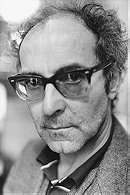
 8.3
8.3
 0
0
